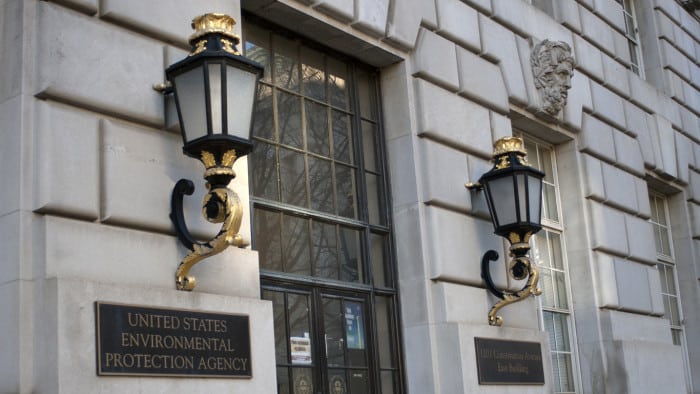
The Environmental Protection Agency has thrown in the towel on its Clean Power Plan model trading rules, announcing Monday it has withdrawn the rules from interagency review and released the draft documents to the public. “While these drafts are not final and we are not required to release them at this time, making them available now allows us to share our work to date and to respond to the states that have requested Exit information prior to the end of the Administration,” EPA acting Assistant Administrator for the Office of Air and Radiation Janet McCabe wrote in a blog post.
The model trading rules were proposed in August 2015 alongside the final Clean Power Plan, which requires states to develop action plans to meet federally set emissions reduction targets and allows for emissions trading mechanisms as a means for compliance. They were to serve as a starting point for states developing their own plans, providing models for two emissions trading programs, one rate-based and one mass-based.
The comment period for the rules ended in late February.
The EPA’s draft of the rules is available online, as are a number of accompanying documents that address topics such as evaluation, measuring, and verification of demand-side energy efficiency, and leakage.
The Clean Power Plan faces an enormous legal challenge pitting 27 states and numerous trade organizations, electricity generators, and utilities against the EPA. The Supreme Court in February halted implementation of the rule until after the legal challenge has been resolved. A 10-judge panel of the U.S. Court of Appeals for the D.C. Circuit heard oral arguments in the case in late September. A ruling is pending.
Adding to the precariousness of the CPP’s future, President-elect Donald Trump pledged during his campaign to overturn the rule.
The EPA had continued to work on the model rules and a related Clean Power Plan incentive program under the Supreme Court stay, saying progress on those items was not related to implementation and was not affected by the ruling. The model rules were expected to be finalized this month.
In April, a group of 14 states called on the EPA to provide more information about CPP compliance and finalize the model rules. The agency said it has alerted those states to the availability of the draft. “We believe that the work we have done so far may be useful at this time to the states, stakeholders and members of the public who are considering or are already implementing policies and programs that would cut carbon pollution from the power sector,” McCabe wrote.
Regardless of the draft nature of the model rules and the Clean Power Plan’s uncertain future, those states that requested more information are likely to find something useful in the document, according to Gabriel Pacyniak, mitigation program manager at the Georgetown Climate Change Center. “I think that it will be helpful to states in a variety of context. Some of these resources can be helpful much more broadly than just in the Clean Power Plan context,” he told GHG Daily in a telephone interview Monday.
For example, Connecticut, one of the states to sign the April letter to McCabe, welcomed the release of the draft document and intends to use the documents for guidance in its carbon reduction efforts. “The resources provided by EPA with the release of the CPP model rule and related technical information will be helpful to states – like Connecticut – that are committed to working on ways to reduce carbon pollution from the power sector and promoting a shift to clean energy,” Connecticut Department of Energy and Environmental Protection spokesman Dennis Schain told GHG Daily by email. “The guidance provided in this EPA material will help support our planning efforts – from continued work in the power sector to support our participation in the Regional Greenhouse Gas Initiative (RGI), to finalization of our new, updated, Comprehensive Energy Strategy.”